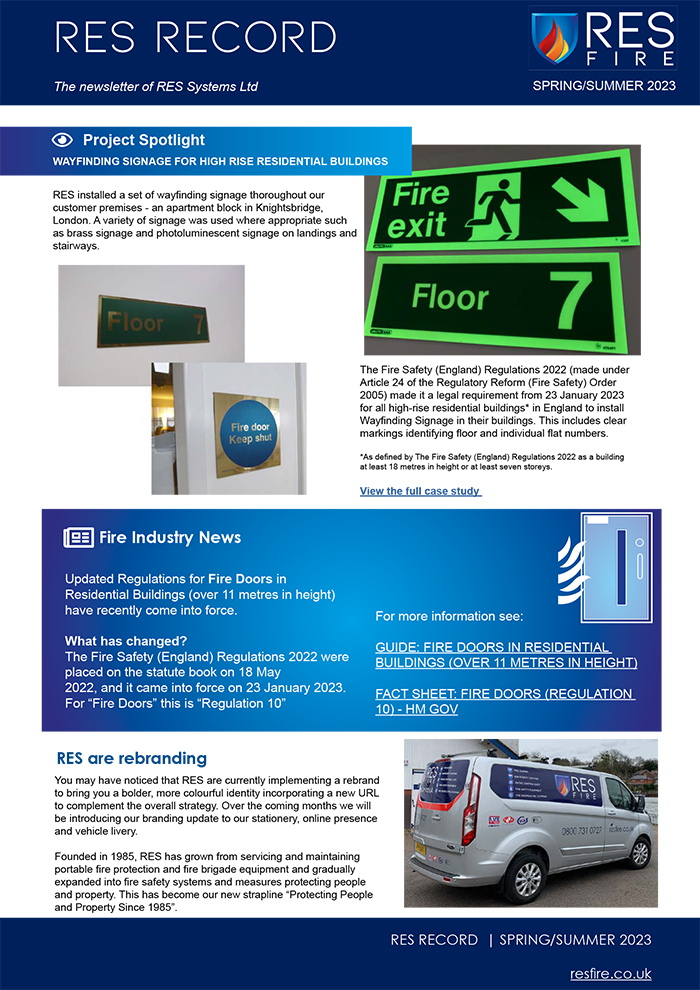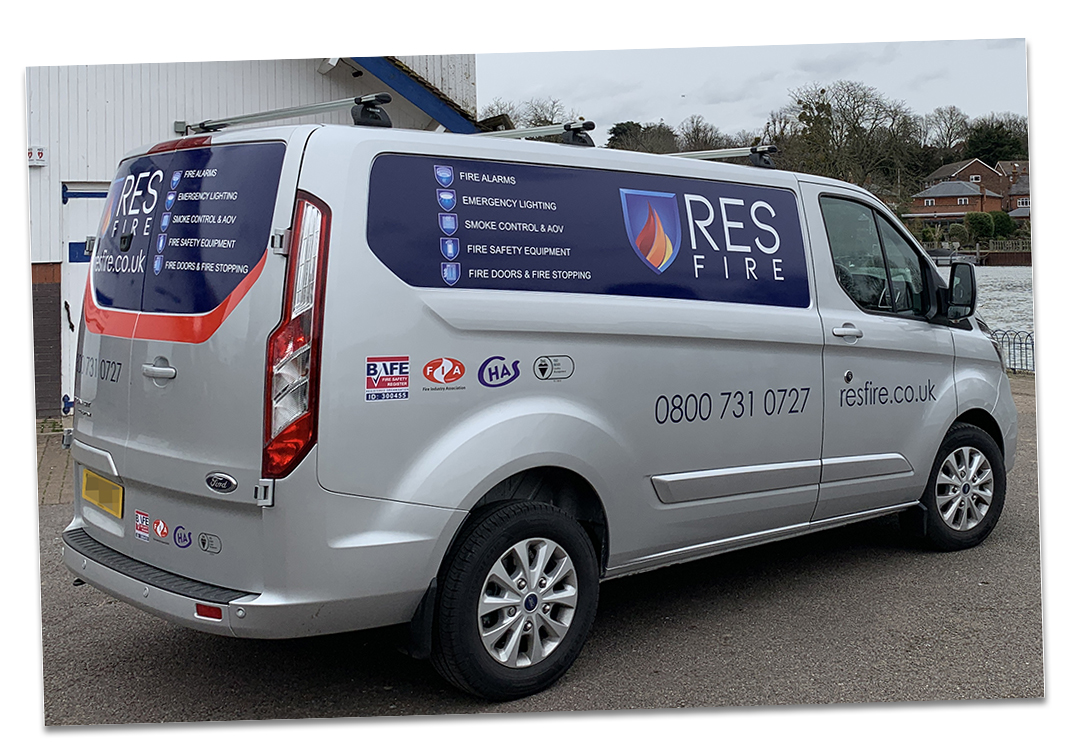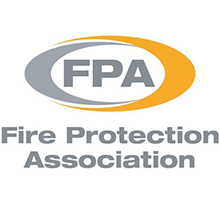RES Record Spring / Summer 2023
RES Record Spring / Summer 2023
Our latest newsletter brings you some highlights from the past few months at RES and the Fire Safety Industry.

Our latest newsletter brings you some highlights from the past few months at RES and the Fire Safety Industry.

You may have noticed that RES are currently implementing a rebrand to bring you a bolder, more colourful identity incorporating a new URL to complement the overall strategy. Over the coming months we will be introducing our branding update to our stationery, online presence and vehicle livery.

Our new logo has been designed to signify what RES does, protecting people and property in the event of a fire.
Founded in 1985, RES has grown from servicing and maintaining portable fire protection and fire brigade equipment and gradually expanded into fire safety systems and measures protecting people and property. This has become our new strapline “Protecting People and Property Since 1985”.
To complement the logo, our new service icons help to signify how we can help our customers achieve greater fire safety compliance. From Fire Detection and Alarm Systems to Fire Plans, RES delivers a broad range of fire protection services backed up with the experience and expertise to deliver.

Along with the logo change, our URL extinguishers.co.uk now redirects to resfire.co.uk
Our email addresses will also be changing in due course are rebranding– e.g., sales@extinguishers.co.uk will become sales@resfire.co.uk


We hope you like the changes we are making, and we look forward to continuing to work with all our customers.
Our latest newsletter brings you some highlights from the past few months at RES and the Fire Safety Industry.
RES will be closed on Monday 19th September 2022 in order for our staff to pay their respects to Her Majesty the Queen. All scheduled jobs have been re-scheduled. Our 24 hr customer call-out is not affected
Fire Door Safety Week aims to raise the awareness of the critical role that fire doors play in saving lives and protecting property in the unfortunate event of a fire. Make Time to Save Lives.
The issues around fire door safety don’t just exist in high rise, high risk buildings. They are prevalent in pretty much any sector and building type that you think of, from care homes and hospitals to schools and specialist housing.
Launched in 2013 in response to a legacy of fire door neglect, Fire Door Safety Week is a ‘mass market’ awareness campaign to increase public understanding of the vital role that fire doors play in protecting life and property. The campaign is managed by the British Woodworking Federation and is supported by a number of partners, including the Home Office’s National Fire Safety campaign, the National Fire Chief’s Council and London Fire Brigade.
It’s crucial to understand the factors that ensure a fire door performs as intended – product manufacture, quality, installation and maintenance all play a part. Their correct specification, maintenance and management can be the difference between life and death for building occupants, as can their use. Propping a fire door open means that they won’t perform as they should in the event of a fire.
Everyone plays their part in ensuring a fire door performs as it should, from the manufacturer through to the building users, and this is why the annual Fire Door Safety Week campaign exists.
RES will publish a number of articles during Fire Door Safety week to support this campaign.
For more info goto https://www.firedoorsafetyweek.co.uk/
Article Updated 20/10/22
INSURER AXA UK has warned of the growing fire risks associated with the lithium-ion batteries used in electric bikes and scooters. Lithium-ion batteries pose a significant fire risk when damaged, over-charged or otherwise exposed to extreme temperatures. Across the past two months, AXA UK has covered almost half a million pounds’ worth of losses on two large claims caused by lithium battery fires
It’s expected that both the frequency and cost of these fires are likely to grow exponentially as transport via e-bikes and e-scooters becomes more popular. AXA UK’s claims data shows that these fires most frequently occur within residential buildings where the associated damage can be devastating.
One of the recent large claims was the result of a faulty e-scooter battery, which was being charged in the kitchen of a ground floor terrace flat. An explosion occurred and fire spread through the home, reaching two storeys above.
The second occurred in a block of flats where an e-bike battery was being charged. The fire totally destroyed the flat and caused smoke damage to the flats on either side. Thankfully, nobody was injured in either incident.
Reducing the risk
To reduce the risk of lithium battery fires, AXA UK recommends the following precautionary steps are taken:
*Never leave batteries charging in a building that’s unattended or overnight when people are asleep in the property
*Unplug or disconnect from the battery once charging is complete
*Do not allow the battery to overheat and ensure that it’s charged on a hard surface where heat can disperse
*Monitor and assess for damage to the battery and the charger and always follow the manufacturer’s guidance for replacement or repairs
*Ensure smoke alarms – preferably interlinked detectors located around the property – are fitted where charging is taking place and, if possible, store and charge away from the main living area
As well as the increasing danger of fire in residential properties, AXA UK is also alerting those responsible for commercial businesses (such as Shopping Centres, retailers and e-bike and scooter storage and repair facilities) about the risks posed by these batteries. Businesses must ensure they have put in place reasonable precautions, reviewed and updated existing fire risk assessments and purchased specific fire extinguishers designed for use on fires involving lithium batteries.
Dougie Barnett, director of customer risk management for AXA UK’s commercial insurance operation, informed Fire Safety Matters: “Fire safety should be the foremost priority when it comes to charging and storing electric bikes and scooters. These forms of transport are becoming increasingly common due to the range of benefits they provide. However, this truism makes it even more essential that people understand the risks around storing them in the wrong way or using damaged batteries.”
Barnett added: “As an insurer, we’re there for individuals when the worst happens, but we want to make sure such risks are managed and reduced so that they can avoid the very often devastating consequences of a fire in their homes or within their business.”
Incredibly concerning
A spokesperson for the London Fire Brigade commented: “It’s incredibly concerning that we’re continuing to witness a rise in incidents involving e-bikes and e-scooters. When lithium-ion batteries and their chargers fail, they do so with ferocity and, due to the fact that the resultant fires develop so rapidly, the situation can quickly become one that’s incredibly serious in nature.”
The spokesperson added: “Our advice is to try and store and charge e-bikes and e-scooters in a safe location if possible, such as in a shed or a garage. If they have to be stored inside, make sure there’s smoke detection fitted and that the means of escape is not obstructed in any way. We know this will not be possible for everyone, so if charging is being carried out indoors, then safe charging must be the way forward, while everyone in the property should know what to do in the event of a fire.”
Published by Fire Safe Matters
Ekho is a wireless based family of products which can be fully integrated into Hochiki’s renowned ESP intelligent hardwired system. At the core of the system is the wireless Translator module.
It is hard-wired to the fire alarm control panel loop and communicates continuously with the wireless devices. Wireless Expander modules are used to extend the radio mesh network, increasing the reach and capacity of the overall system.
The Ekho Expander modules create a self-configuring mesh network, which constantly relays field device signals back to the Translator module.
Each wireless device determines which Expander has the strongest signal path and automatically connects to it. The Expander mesh network guarantees an “always on” connection between the wireless devices and the Translator/fire control panel
– Patented Wireless technology
– ESP Compatible
– Expandable
– Simple Installation
– Self Configuring Mesh Network
– Hybrid System Capable
– Robust and Secure Communication
– Fully Intelligent
A full complement of Hochiki Wireless devices are available such as Wireless Traslator Modules, Optical Sensors, Heat and Multi Sensors, Call Points and Sounders.
Castles, Cathedrals, Churches, Museums, Modular Construction, Remote Buildings, Asbestos sites, Temporary structures, Banks, Aesthetically sensitive interiors, Concrete structures, Historic / protected buildings, Prisons, Hotels and Offices
RES have completed a number of installations using the Ehko technology in a Country Manor House, a local School and a Retail Property.
Images © Hochiki Europe, LLC
The FPA’s expert surveyors have been conducting comprehensive, non-destructive fire compartmentation surveys and delivering detailed reports for several years. We are delighted to announce that we have recently developed new technology to significantly improve the outputs for our customers.

New technology benefits
Using a tablet device, our software application enables our surveyors to upload building floor plans which are used to describe the compartmentation strategy, and identify the location of each fire door and any identified compartmentation issue/breach. Each issue is given a unique ID number on the drawing which corresponds with the digital survey report. A RAG rating is also included to enable the prioritisation of remedial works.
This technology enables us to produce a clear, concise, comprehensive digital report which links any identified issues to the location on the building floor plans. Annotated drawings are provided in AutoCAD and pdf formats and the report is produced in a useable format so that clients can filter, extract, and import data into their own systems.
Our compartmentation survey outputs comprise:
This new technology can also be used to carry out fire door inspection surveys as a discrete activity.
FPA Director of Operations and Principal Consultant, Howard Passey said: “We’re really pleased to have reinvigorated the way in which we carry out our compartmentation surveys and fire door inspections through the development of this technology. It offers considerable improvements for our clients as it makes the process of carrying out the surveys quicker, and therefore more cost effective. The outputs are also more comprehensive and more user friendly, and I look forward to our clients reaping the benefits.”
Find out more about our new compartmentation survey and fire door inspection technology.
Article originally published by the Fire Protection Association, FPA Media, 6 July 2022 © COPYRIGHT THE FPA 2022
RES are members of the FPA
Our latest newsletter brings you some highlights from the past few months at RES and the Fire Safety Industry.
© COPYRIGHT 1985-2025 - ALL RIGHTS RESERVED - RES and RES FIRE ARE THE TRADING NAME OF RES SYSTEMS LTD